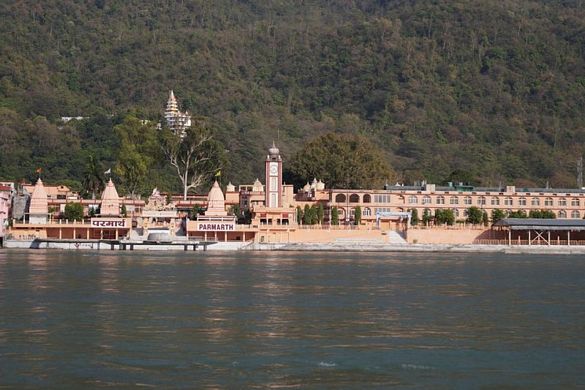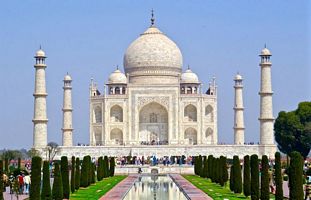Mountaineering, or mountaineering, is a travel and exploration art that involves travelers climbing mountains. It is an exciting and difficult endeavor, combining strength, courage and wisdom to reach their set goal. Mountaineering is a unique experience that provides the traveler with the opportunity to feel oneness with nature and gives him the ability to transcend its limits. Mountaineering has been mentioned in Indian literature and historical accounts since ancient times. The heights of the major peaks of the Himalayas have made this art important since archaeological times. Nowadays, mountaineering has taken the form of a distinct type of literary, environmental and sporting activity.
The practice of mountain climbing is particularly prevalent in North India, where the Himalayas are a vast mountain range that encompasses many peaks. Mountaineering enthusiasts are excited to experience the masterpiece journeys of these mountains.The most important part of mountaineering is that it offers a unique experience which is a balanced blend of natural beauty, peace and adventure. To reach the summit, the hiker has to face mountain slopes, caves, avalanche tracks, and dangerous rocks. It provides the person with the decision and support he needs, which helps him in other areas of life as well.
Another important aspect of mountaineering is the importance of teamwork and quality. Here, all the members have to work together, thereby practicing helping each other and helping towards prosperity. Moreover, the qualities taught are also useful in other areas of life, such as business, education, and personal development. If we talk about mountaineering, safety is a very important aspect. All necessary safety measures must be followed to ensure safe transportation of the passenger. They are trained in specialist equipment, safety rappelling, and avalanche trekking so that they do not face any difficulty in reaching their goal.
India offers a plethora of mountaineering destinations, appealing to climbers of various skill levels. Some of the most notable destinations include:
The Himalayas: The Indian Himalayas present numerous peaks for mountaineering, attracting climbers from around the world. Notable regions include Ladakh, Himachal Pradesh, and Uttarakhand. Peaks like Nanda Devi, Kamet, and the various summits in the Kanchenjunga area are popular.
Siachen Glacier: Located in the eastern Karakoram range in the Himalayas, Siachen Glacier is known for its challenging climbing conditions. It's more suitable for experienced mountaineers due to its extreme weather and difficult terrain.
Sikkim: Sikkim, located in the Himalayas, offers several mountaineering opportunities with peaks like Mt. Kangchenjunga, which is the third highest mountain in the world, and other peaks like Frey Peak, Lama Wangden, and Brumkhangse.
Uttarakhand: Known as the 'Land of the Gods', Uttarakhand has some of the highest mountains in India. Peaks like Nanda Devi, Trishul, and Shivling are famous among mountaineers. The region is known for its beautiful landscapes and challenging climbs.
Himachal Pradesh: This region is home to some beautiful peaks like Hanuman Tibba, Deo Tibba, and Friendship Peak in the Pir Panjal range. These are popular for both beginners and experienced climbers.
Ladakh: Offering a unique landscape that differs from the greenery of other Himalayan regions, Ladakh is known for its stark beauty and challenging peaks. Stok Kangri and Kang Yatse are popular among climbers.
Arunachal Pradesh: Home to the Eastern Himalayas, this region offers unexplored and challenging peaks, ideal for those looking for less crowded and untouched mountaineering experiences.

Arunachal Pradesh
Arunachal Pradesh is a state located in northeastern India and is known for its rugged terrain and rich biodiversity. The state"s capital is Itanagar, and it is home to several ethnic groups, including the Monpa, Adi, and Nyishi. The state"s economy is driven by agriculture and tourism, with apple farming being the primary crop grown. The state is also known for its rich cultural heritage, with several indigenous festivals being celebrated throughout the year. Arunachal Pradesh has several notable tourist destinations, including the Tawang Monastery, the Namdapha National Park, and the Ziro Valley.

Himachal Pradesh
Himachal Pradesh is a state in northern India, bordered by Jammu and Kashmir, Punjab, Haryana, Uttarakhand, and Tibet. Its capital city is Shimla, which was once the summer capital of the British Raj. Himachal Pradesh is known for its scenic beauty and attracts a large number of tourists every year. The state has a predominantly rural population, and agriculture is the primary source of livelihood. However, the state government has been promoting tourism and industrialization to boost the economy.

Sikkim
Located in the Himalayas, Sikkim is a small and scenic state known for its natural beauty and unique culture. It is home to several Buddhist monasteries and is known for its vibrant festivals and traditions. Agriculture is the main source of income, with cardamom, ginger, and oranges being the major crops. The state is also a major producer of hydropower and is known for its eco-tourism initiatives.

Uttarakhand
Uttarakhand is a state located in the northern part of India. It was formed on 9 November 2000 as the 27th state of India. The state is known for its scenic beauty and is often referred to as the "Land of the Gods" due to the presence of numerous Hindu temples and pilgrimage centers. The state has a total area of 53,483 square kilometers and is bordered by Tibet in the north, Nepal in the east, and the Indian states of Uttar Pradesh to the south and Himachal Pradesh to the west. Dehradun is the capital of Uttarakhand.

Ladakh
Ladakh is a union territory located in the northernmost region of India. It is known for its breathtaking natural beauty, including the Himalayan mountain range and the high-altitude desert of the Tibetan Plateau. The region is sparsely populated and home to a mix of cultural and religious traditions, including Buddhism, Islam, and Hinduism.Ladakh"s economy is largely driven by tourism, with visitors coming to explore the region"s stunning natural landscapes and unique cultural heritage. The union territory is also home to several important cultural and historical landmarks, including the Leh Palace and the Hemis Monastery.
Top Stories
-

Discover Exciting Places to Visit in Agra, Uttar Pradesh - Your Ultimate Travel Guide
-

Explore Exciting Places to Visit in Mumbai, Maharashtra - Your Ultimate Travel Guide
-

Explore the Wonderful Places to Visit in Manali, Himachal Pradesh - Your Ultimate Guide!
-

Places to Visit in Solan Himachal Pradesh - Explore the Best Tourist Spots
-

Discover the Best Places to Visit in Kangra, Himachal Pradesh: A Traveler's Guide




